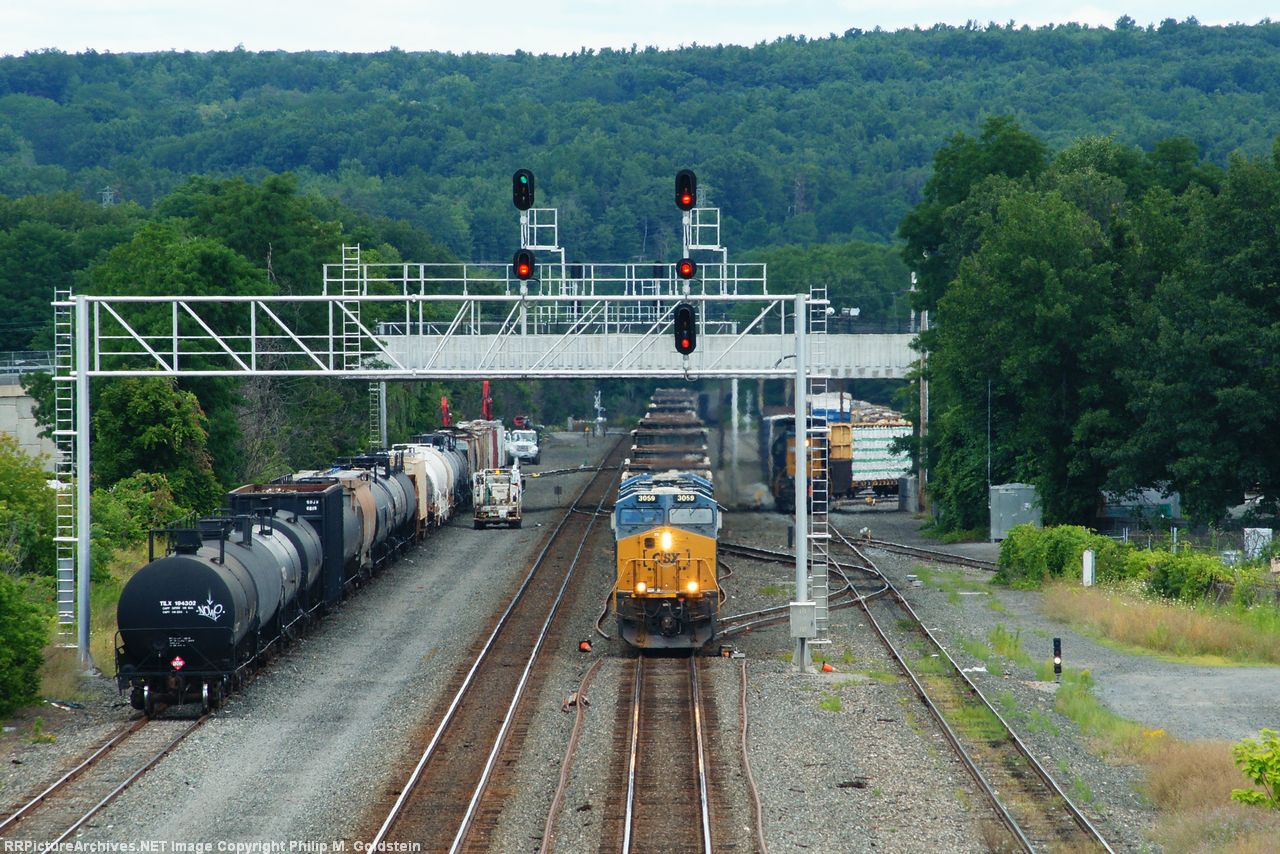Now I first noticed this exception on the NJT RiverLINE in Burlington, NJ, but since I don't have a good photo of that example I will throw to the former Seaboard Rocky Mount Yard in Rocky Mount. NC. For those of you who might frequently pass through DI interlocking adjacent to the yard, you may have noticed that the signals governing movement on an interlocked yard track were always lit to display a Restricting indication...even after the interlocking was re-signaled.
 |
| Before |
 |
| After |
I spotted a similar setup at the new interlocking installed for fruit trains near Schenectady on the CSX Selkirk Branch. Once again there was a through yard track with interlocked crossovers onto the main. Sure enough the interlocking can fleet in both directions when only yard moves are called for.
I'm not 100% sure if these signal will drop to Stop when a train actually inters the interlocking. The old PARK interlocking would do that in automatic mode, flipping up t Restricting when the train passed, however this situation was one of the last uses for mechanically operated semaphores that could be set to Resreicting and then just left there, regardless of track occupancy.
There is a practice similar to this in the UK involving the use of yellow disc or position light signal where a signal at Stop can be passed if the driver determines the points are set for the tail track instead of the main. Not exactly the safest practice, but the spirit is the same.


Generally referred to as a "Drill Signal". On Amtrak's NEC there's one at Bay Interlocking on the Ladder Track. I've also seen this setup at St Joseph Mo and Clovis, NM. The Restricting signals on either side allow yard moves through the plant without having to contact the dispatcher for even move yet still aloow access to the main line when needed.
ReplyDeleteThanks for the info regarding the name. I figured they were called something.
DeleteAnd at Bryn Mawr on the PRR; see 18RA and 18RB:
ReplyDeletehttp://broadway.pennsyrr.com/Rail/Prr/Maps/Itlk/brynmawr.gif
Woah, great catch. I'll need to update the post.
DeleteWhat does it mean to "fleet the signal"?
ReplyDeleteIt means that a controlled signal behaves as if it were an automatic. Displaying automatically in accordance with block conditions.
DeleteSo is it a mode that the interlocking operator would toggle off when setting a main to yard or yard to main movement, and then on again once finished? Or does the machinery just "know" to operate in that mode when no such move occurring?
DeleteThx!
Fleeting is something the dispatcher or operator sets when they have multiple movements using the same route. In this case with a headshunt signal, the train can travel back and forth through the interlocking as many times as necessary.
Delete